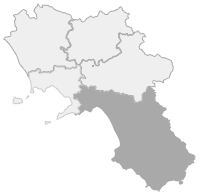Calore river is the son of Cilento entirely, which must be accompanied by the adjectives "Lucanian" or "Salernitan", to distinguish it from the northernmost homonym that flows between Irpinia and Sannio.
A naturalistic wonder since the place and the way it comes to life, in Festole, on the northern side of Mount Cervati, rising from large springs protected by an imposing limestone wall in the dense forest of beech trees of Pruno.
63 kilometers long, in the highest part of its course, it has profoundly marked the landscape over time, opening its way among rocks and carving wild gorges in many sections. Particularly striking are the gorges near the village of Laurino and between Magliano Nuovo and Felitto, carved on Mount Pescorubino.
It crosses the territories of twelve municipalities, the Calore Lucano, which has two important tributaries, Tanagro and Fasanella stream, and in turn it is the left tributary of the river Sele, to which it merges near Paestum. After having created along a stretch of its course the fertile Valley Calore, dedicated to viticulture, and having irrigated the fields in the Sele valley.
Among the few streams still hosting the rare otters, Calore is a Site of Community Interest (SIC) in the Mediterranean biogeographical region.
It was precisely in the upper Calore valley, about seventy kilometers from Salerno, that on September 16 1943, the allied troops of the US 5th Army, disembarked on the coasts of the Gulf of Salerno on September 8, and the British 8th Army joined forces, landed in Reggio Calabria on 3 September.




Comments powered by CComment